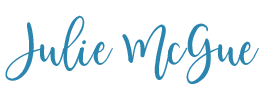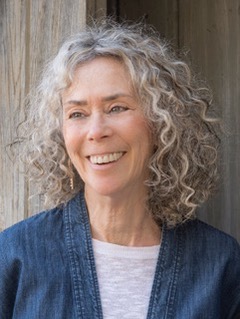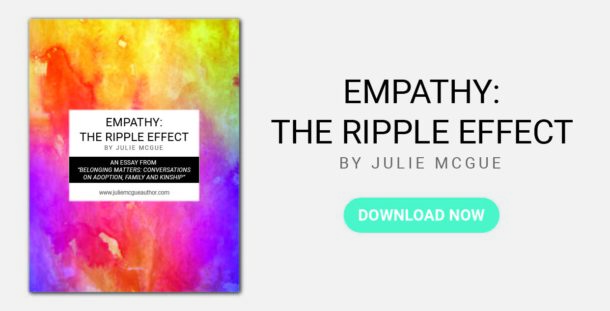INTERVIEW with Barbara Linn Probst
Author of QUEEN OF THE OWLS
In a sentence or two, what’s your book about?
Queen of the Owls is the story of a woman’s quest to claim her neglected sensuality and find her whole, authentic self behind the roles of wife, mother, sister, and colleague. What makes the story especially compelling and unique is that it’s framed around the art and life of iconic American painter Georgia O’Keeffe.
Okay, you’ve hooked us! Now tell us a bit more.
Elizabeth, the story’s protagonist, has always defined herself by her intellect. She’s chosen the logical, responsible path and avoided the sensuality she believed was beyond her reach. During the course of the story, she comes to know and embrace a fuller self—body and beauty as well as brain. There’s a price to pay, but Elizabeth knows she can’t go back.
Queen of the Owls is, in a word, the story of a woman’s transformation—timeless, yet diving deep into timely, contemporary issues of privacy, consent, feminism, and the power of social media to upend our lives.
What do you want readers to get from the book?
I’d like readers to take away a feeling of hope and possibility—to see, through Elizabeth’s story, that embracing the parts of yourself you’ve neglected or denied can bring a new wholeness.
Tell us about the role of Georgia O’Keeffe in the book. Why O’Keeffe?
The idea of framing the story around the art and life of Georgia O’Keeffe really just “appeared” to me! I’ve always loved her paintings; they called to me in a way that felt very connected to the question of what it means to be a woman. And in doing research for the book, I learned so much more about her life and work—which, in turn, enhanced the story in ways I hadn’t anticipated.
O’Keeffe has been a figure of endless fascination for over a century, not only for her artistic genius, but also because of how she lived. She was the quintessential feminist who rejected the feminists’ attempts to turn her into their matriarch, the severe desert recluse who created some of the most sensuous art of all time.
Although Georgia O’Keeffe is a central figure or “force,” she isn’t an actual character since the story is set in the present. Rather, she’s present as Elizabeth’s inspiration, the person whose blend of austerity and voluptuousness Elizabeth longs to emulate. In seeking to understand O’Keeffe, Elizabeth comes to understand herself.
Art worked well as a vehicle for Queen of the Owls because the story is about Elizabeth’s yearning to be truly seen. And through being seen, to be known—not just passively, but through choosing to reveal herself. Because Elizabeth longs for this so deeply, she takes a risk that brings her far outside her comfort zone—with consequences.
What does your protagonist have to overcome in Queen of the Owls?
Elizabeth’s search for authenticity is a complicated one as she tries to fulfill her roles as wife, mother, sister, and academic—to do right by those she cares about, while also doing right by herself. It’s not a matter of extracting herself from an abusive marriage or breaking free from a family that wants to stifle her. There are no villains; it’s Elizabeth herself who has created the life she now finds so unfulfilling.
She takes a step outside the confines of that life, and everything begins to unravel. It’s here that her real “challenge” becomes evident. As Elizabeth tries desperately to regain “control,” it’s clear that the only way she can attain her true goal is through that very unraveling. What she has to overcome, in other words, is her misbelief about who she is and who she can be.
What unique challenges did writing this book pose for you?
One of the most demanding aspects of writing Queen of the Owls was the range of research I needed to do. As a first step, I needed to learn far more about Georgia O’Keeffe than would ever find its way into the final book. I read everything I could find, went to see her paintings, talked to experts, visited the places where she lived and worked. I needed to immerse myself in her life and art in order to feel, understand, and convey what that might have brought Elizabeth.
What made this uniquely challenging was that Elizabeth’s interpretation of O’Keeffe had to be shaped by her own emotional needs—subjective, rather than “factual”—yet I couldn’t say anything inaccurate. If I’d been writing historical fiction, the integration of factual material would have been more direct. But here I was treading a subtle line.
What’s been the most rewarding aspect of having written Queen of the Owls?
One of the reasons that writing Queen of the Owlshas been so meaningful to me is because it represents a fictionalized version of my own journey. Like Elizabeth, I grew up labeled a “brain” and had to embark on my own journey to wholeness. (Nope, I never posed nude. Sorry!)
I think all good fiction is like that—not a thinly-disguised memoir and definitely not catharsis, but a process of digging deeply into the emotional truths you’ve learned through your own experience and then “translating” those emotional truths into a fictional world. If you’re lucky, that fictional world will touch others and have an enduring meaning for them too.
Were there any surprises, as you launched Queen of the Owls into the world?
The first, and most obvious answer: publishing in April of 2020, just as the reality of COVID was becoming apparent, meant that I had to pivot, let go of my cherished plans and calendar of events, and learn to be flexible. One of the wonderful surprises, however, was how incredibly generous the hosts of the online reader groups were in welcoming authors like me and offering virtual opportunities that, in fact, allowed us to reach a much wider audience.
The other answer, more personal, is how meaningful it’s been to hear from individual readers. The book has done well—fantastic media coverage, Amazon reviews, awards, and all that—but the contact with real readers has been the thing that’s truly mattered.
What’s next for you?
My second novel will launch in April 2021. It’s still under wraps, but stay tuned for a conversation right here!
Where can we find you and your book?
My website https://www.barbaralinnprobst.com/ is the best place to learn more and to find links to all the ways you can order Queen of the Owls!
To read nearly 160 reader reviews, have a look at my Amazon page, as well. And thank you!
“One of the reasons that writing Queen of the Owls has been so meaningful to me is because it represents a fictionalized version of my own journey. “

Snag my in-depth reference guide to best equip you for the journey ahead.





